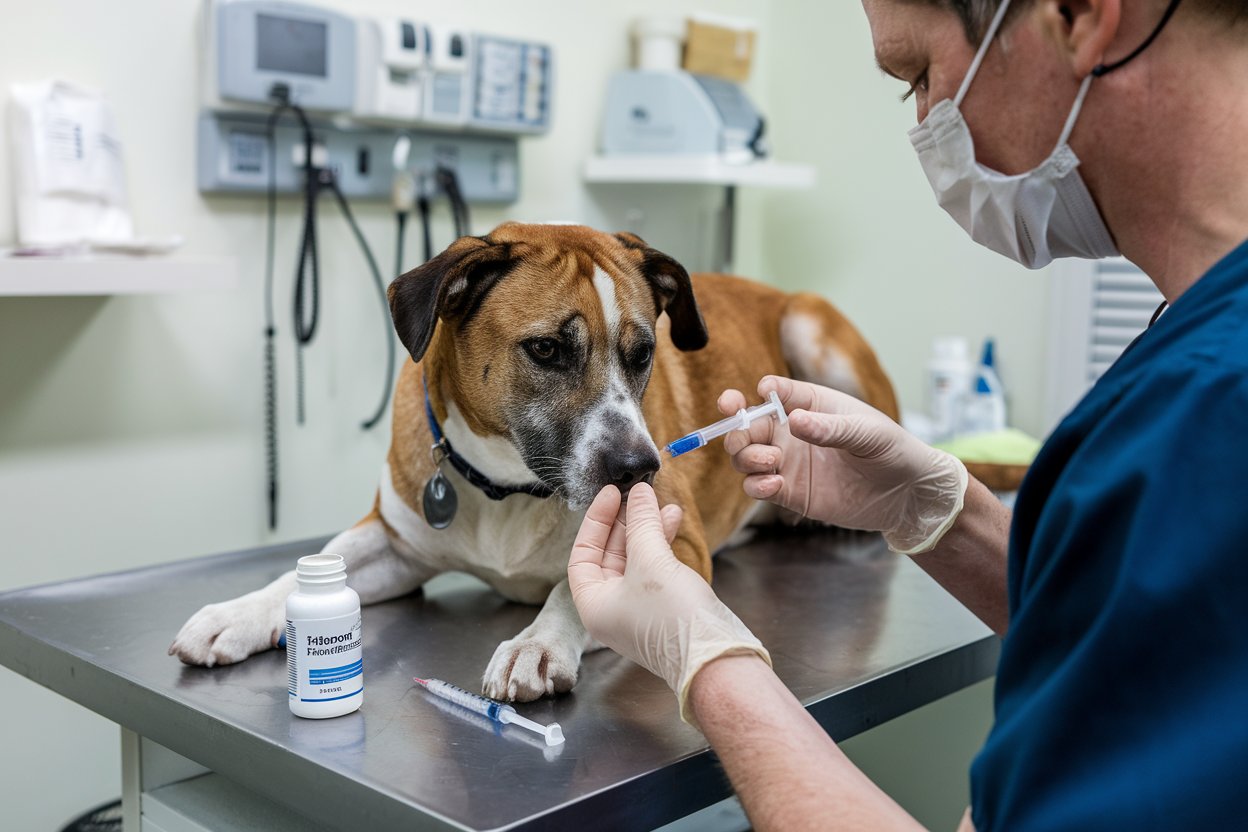Is Fluconazole Right for Your Dog? A Comprehensive Guide for Pet Owners

As pet owners, we strive to keep our furry companions healthy and happy. When faced with health issues like fungal infections, it’s crucial to have reliable information about treatment options. One medication that may come up is Fluconazole, an antifungal drug commonly used in both humans and dogs. This comprehensive guide will help you understand Fluconazole, its uses, potential side effects, and how to determine if it’s the right choice for your dog.
What is Fluconazole?
Fluconazole is an antifungal medication belonging to the triazole class. It works by inhibiting the synthesis of ergosterol, a vital component of fungal cell membranes. This disruption leads to the death of the fungus, making Fluconazole effective against various fungal infections. It’s commonly prescribed for a range of conditions affecting dogs, from skin infections to more serious systemic issues.
Common Fungal Infections Treated with Fluconazole
Fungal infections can occur in different forms, and Fluconazole is often prescribed for:
-
Dermatophyte Infections: Conditions like ringworm can affect a dog’s skin, leading to itching, hair loss, and discomfort. Fluconazole can be effective in treating these infections, especially when topical treatments fail.
-
Yeast Infections: Dogs can develop yeast overgrowth, particularly in moist areas like the ears and skin folds. Malassezia is a common culprit, and Fluconazole can help control these infections.
-
Systemic Fungal Infections: More serious infections, such as blastomycosis and coccidioidomycosis, can affect multiple organs and may require Fluconazole as part of a comprehensive treatment plan.
When is Fluconazole Prescribed?
Your veterinarian may prescribe Fluconazole if your dog shows symptoms of a fungal infection, especially when:
-
Topical treatments are ineffective: If your dog’s condition doesn’t improve with creams or ointments, Fluconazole may be necessary for systemic treatment.
-
Chronic or recurrent infections occur: For dogs that experience frequent yeast or fungal infections, Fluconazole can help manage these conditions more effectively.
-
Severe or systemic infections are diagnosed: In cases where fungi have spread throughout the body, Fluconazole is often a critical component of the treatment plan.
Dosage and Administration
Fluconazole is typically administered orally in tablet or liquid form. The appropriate dosage will depend on your dog’s weight, the type of infection, and its severity. Always follow your veterinarian’s instructions regarding dosage and duration of treatment. Consistency is key; administering the medication at the same time each day can help ensure its effectiveness.
Potential Side Effects
While Fluconazole is generally well-tolerated, there are potential side effects to be aware of:
-
Gastrointestinal Upset: Some dogs may experience vomiting, diarrhea, or decreased appetite while taking Fluconazole. If these symptoms persist, consult your veterinarian.
-
Liver Function: Fluconazole can impact liver enzyme levels. It’s essential to monitor your dog’s liver function through regular blood tests, especially during long-term treatment.
-
Allergic Reactions: Although rare, some dogs may develop an allergic reaction characterized by swelling, hives, or difficulty breathing. If you notice any of these symptoms, seek immediate veterinary assistance.
-
Drug Interactions: Fluconazole may interact with other medications your dog is taking. Always inform your veterinarian about any other treatments or supplements your dog is on.
How to Determine if Fluconazole is Right for Your Dog
To assess whether Fluconazole is appropriate for your dog, consider the following steps:
-
Consult Your Veterinarian: If you suspect your dog has a fungal infection, it’s vital to consult your veterinarian for a proper diagnosis. They may perform tests, such as skin scrapings or blood tests, to determine the underlying cause of your dog’s symptoms.
-
Discuss Treatment Options: If a fungal infection is confirmed, discuss all available treatment options with your veterinarian. They will explain the benefits of Fluconazole and any alternatives.
-
Consider Your Dog’s Overall Health: Before starting Fluconazole, evaluate your dog’s overall health. If your dog has pre-existing conditions, particularly liver issues, your veterinarian will take this into account when prescribing medication.
-
Monitor Your Dog During Treatment: Once treatment begins, keep a close eye on your dog for any changes in behavior, appetite, or signs of side effects. Regular veterinary check-ups will help ensure your dog is responding well to the medication.
Conclusion
Fluconazole can be an effective treatment for various fungal infections in dogs, offering relief from discomfort and aiding recovery. However, it’s essential to make informed decisions in consultation with your veterinarian. By understanding what Fluconazole is, the types of infections it treats, potential side effects, and how to monitor your dog during treatment, you can play an active role in your pet’s health care. If you suspect your dog has a fungal infection or have questions about Fluconazole, don’t hesitate to reach out to your veterinarian for guidance. With the right treatment and care, you can help your dog overcome fungal challenges and enjoy a healthier, happier life. read more
- Art
- Causes
- Crafts
- Dance
- Drinks
- Film
- Fitness
- Food
- Spellen
- Gardening
- Health
- Home
- Literature
- Music
- Networking
- Other
- Party
- Religion
- Shopping
- Sports
- Theater
- Wellness
- IT, Cloud, Software and Technology


